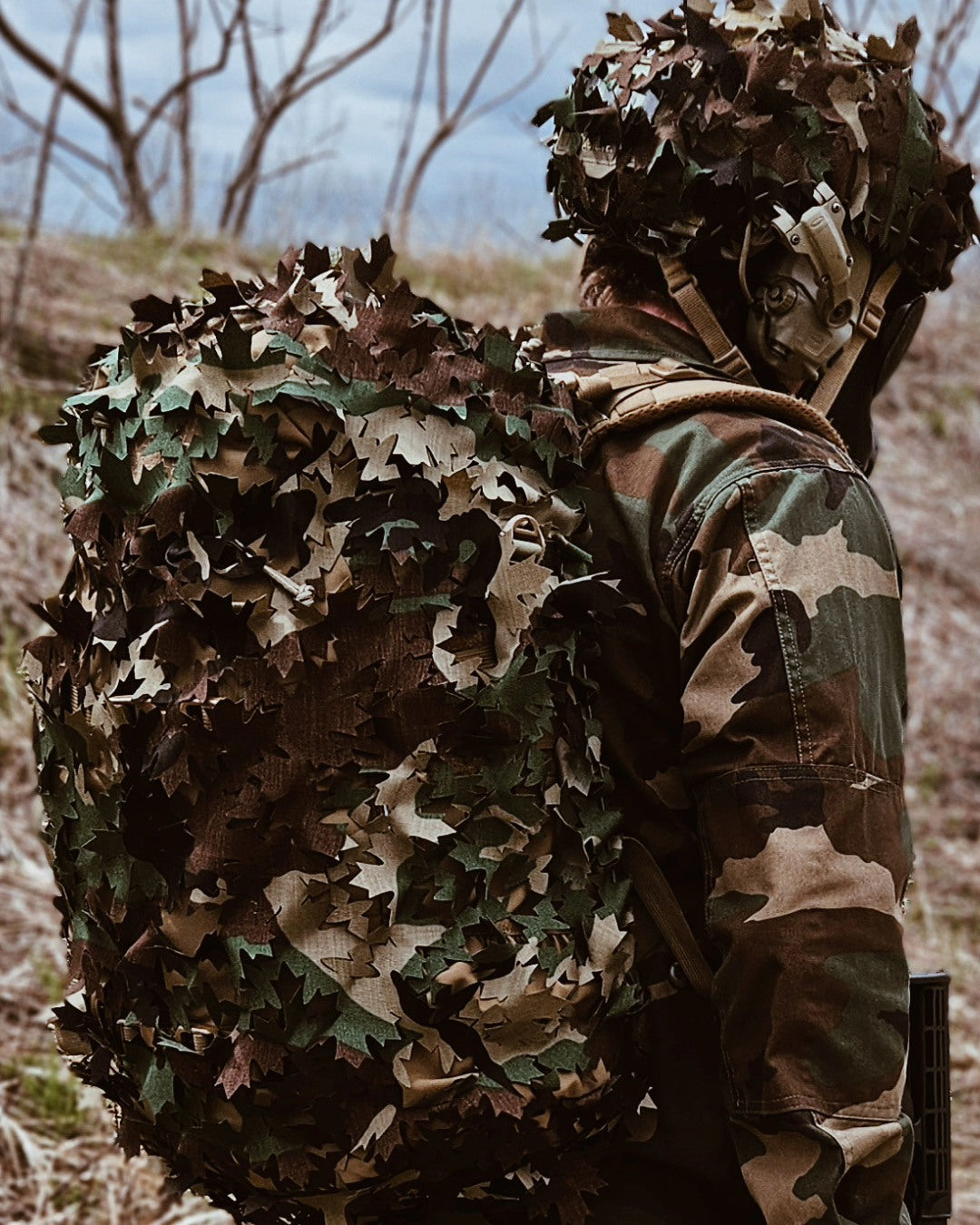Camouflage in nature is a vital element for survival, both in the wild and on the battlefield. For millennia, animals have developed concealment strategies to escape predators and hunt prey.
Today, these strategies directly inspire technological advances in military camouflage.
Moreover, thanks to progress in material science, nanotechnology, and advanced optics, modern camouflage goes far beyond simple printed patterns on uniforms or vehicles.
This blog explores the innovations inspired by wildlife, including adaptive materials, advanced optical camouflage, thermal invisibility, and the promising prospects offered by quantum physics.
1. Adaptive Polymers and Nanotechnologies: Changing Appearance Instantly | Camouflage in Nature
Natural Inspirations
In nature, several animals can instantly alter the color or texture of their skin to adapt to their surroundings. For example, among the most well-known examples are:
-
The chameleon, which uses nanocrystals in its skin to change color.
-
The cuttlefish and octopus, equipped with chromatophores that can shift their shade within milliseconds.
-
Certain frogs and fish, which modify their pigmentation based on light and temperature.
Military Applications
Biomimicry researchers are developing adaptive polymers and electrochromic surfaces capable of replicating these effects. As a result, smart materials allow:
-
Military uniforms to change color and pattern to match various environments (forest, desert, urban area).
-
Armored vehicles to adapt their coating based on surroundings.
-
Drones to adjust their appearance to avoid visual detection.
Current limitations: These technologies still require a continuous power source and may be vulnerable to extreme weather conditions.
2. Advanced Optical Camouflage: Toward Total Invisibility? | Camouflage in Nature
Metamaterials and Transformation Lenses
Scientists are exploring metamaterials, artificial materials capable of bending light around an object, rendering it nearly invisible. In particular, inspired by the refractive properties of sea creatures like jellyfish, these materials rely on advanced manipulation of light waves
How It Works
Advanced optical camouflage relies on:
-
Metamaterials that bend visible light.
-
Transformation lenses that alter the refractive index of surfaces.
-
Active refraction systems that project a background image in front of an object to mask it.
Limitations and Prospects
While total invisibility remains a challenge, "invisibility cloaks" prototypes are under development. However, their effectiveness still depends on viewing angles and specific light wavelengths.
3. Thermal and Infrared Invisibility: Evading Modern Detection Systems | Camouflage in Nature
The Thermal Signature of Military Targets
In modern warfare, infrared sensors can detect targets based on the heat they emit. Even if visually hidden, a soldier or vehicle can remain visible due to their thermal signature.
Thermal Concealment Methods
-
Thermo-regulated coatings: Inspired by animals that can regulate their body temperature, these materials reduce or block heat emissions.
-
Thermal decoys: They emit false heat signatures to mislead enemy sensors.
-
Infrared-absorbing textiles: These advanced fibers prevent heat dissipation by minimizing infrared emissions.
Limitations: These solutions often require trade-offs between thermal insulation and mobility. Some ultra-sensitive sensors can still detect anomalies in the environment.
4. Quantum Camouflage: Total Multi-Spectral Concealment | Camouflage in Nature
The Quantum Approach to Camouflage
Indeed, quantum physics could revolutionize camouflage by allowing multi-spectral invisibility—complete concealment across all electromagnetic wavelengths.
Explored Effects and Technologies
-
Quantum superposition: Theoretically allows an object to appear differently depending on the observer.
-
Plasmonic materials: These materials could absorb and redistribute light energy to hide an object.
-
Active adaptive camouflage: Inspired by chameleon-like abilities, this concept uses nanostructures to control the propagation of light and infrared waves.
Technological Challenges
Nevertheless, harnessing these properties remains at an experimental stage, and one major obstacle is the enormous energy consumption required to make them work.
5. Strategic and Ethical Implications of Military Invisibility Technologies | Camouflage in Nature
Operational Advantages
-
Enables infiltration into enemy zones without detection.
-
Offers tactical advantages to special forces.
-
Reduces the vulnerability of soldiers and military vehicles.
Risk of Military Escalation
Total invisibility on the battlefield introduces major challenges:
-
Could encourage preemptive strikes or escalate conflicts.
-
Makes it harder to distinguish between allied and enemy forces, increasing the risk of friendly fire.
Legal and Ethical Frameworks
Laws of war prohibit certain forms of deception. Nevertheless, total invisibility could challenge the very notion of international military conventions, raising ethical debates about these technologies.
Conclusion | Camouflage in Nature
The future of military camouflage is directly inspired by natural mechanisms, yet it also relies on revolutionary technological breakthroughs. Adaptive polymers, metamaterials, thermal invisibility, and quantum concepts are progressively transforming modern warfare. However, these innovations bring significant strategic and ethical concerns.
As technologies advance rapidly, it is crucial to regulate their use to ensure responsible deployment on the battlefield. To that end, find everything you need for camouflage at nutsof.com.
FAQ | Camouflage in Nature
1. What is a metamaterial and how does it work?
In essence, a metamaterial is an artificial structure designed to manipulate light and other electromagnetic waves, enabling effects like negative refraction and invisibility.
2. What is the main limitation of adaptive polymers for military camouflage?
These materials require continuous power supply and their durability in extreme conditions is still under development.
3. How do military forces use thermal concealment?
They use special coatings, infrared-absorbing textiles, and thermal decoys to hide body and vehicle heat.
4. Is quantum invisibility truly possible?
While theoretically feasible through quantum principles, practical applications are still in very early experimental stages.
5. Are military camouflage technologies regulated by international law?
Yes, some forms of camouflage are governed by the Geneva Conventions and other international military agreements.
Best regards,
The Nutsof Team
Advanced Camouflage & Defense Solutions
🌐 www.nutsof.com
Follow us on Facebook and Instagram for the latest in advanced military camouflage technologies.


